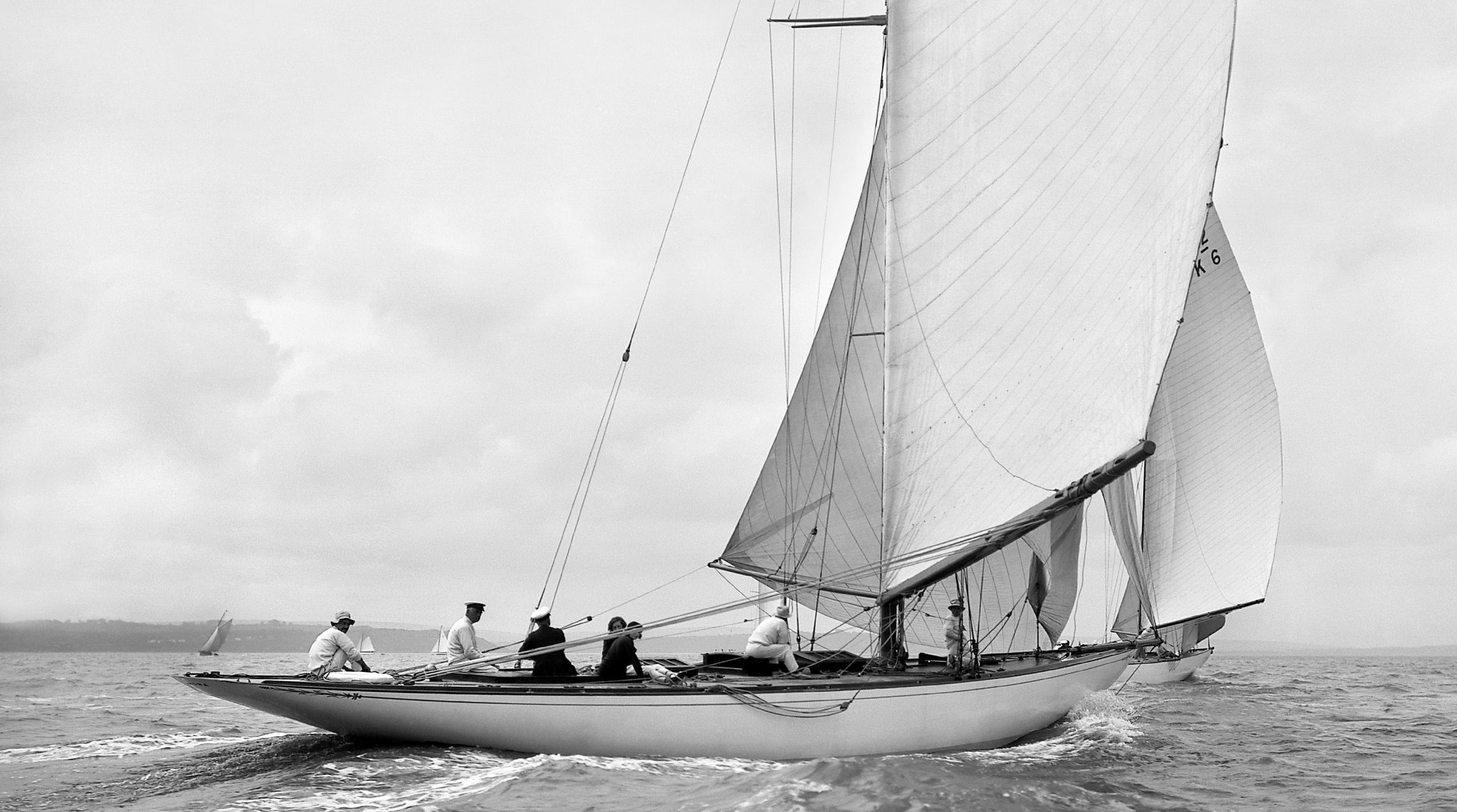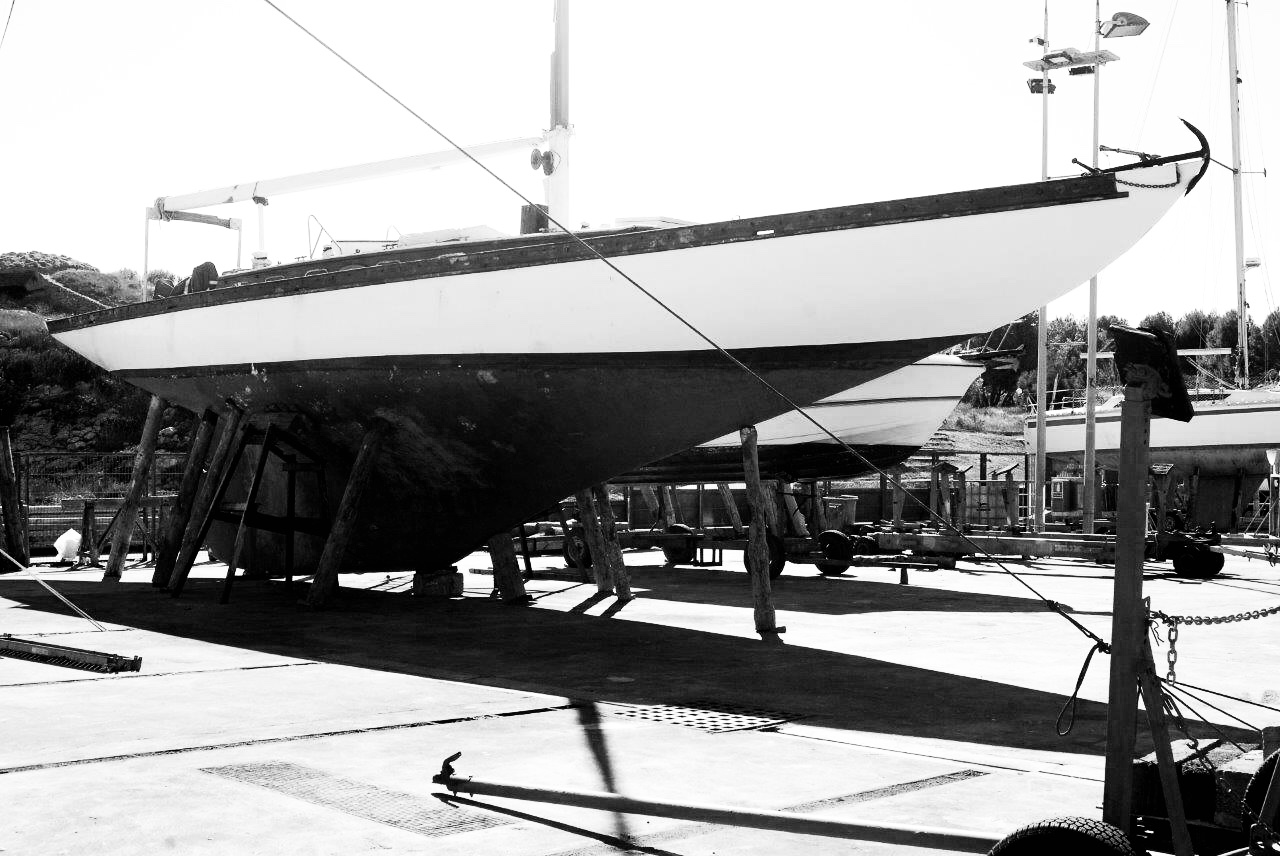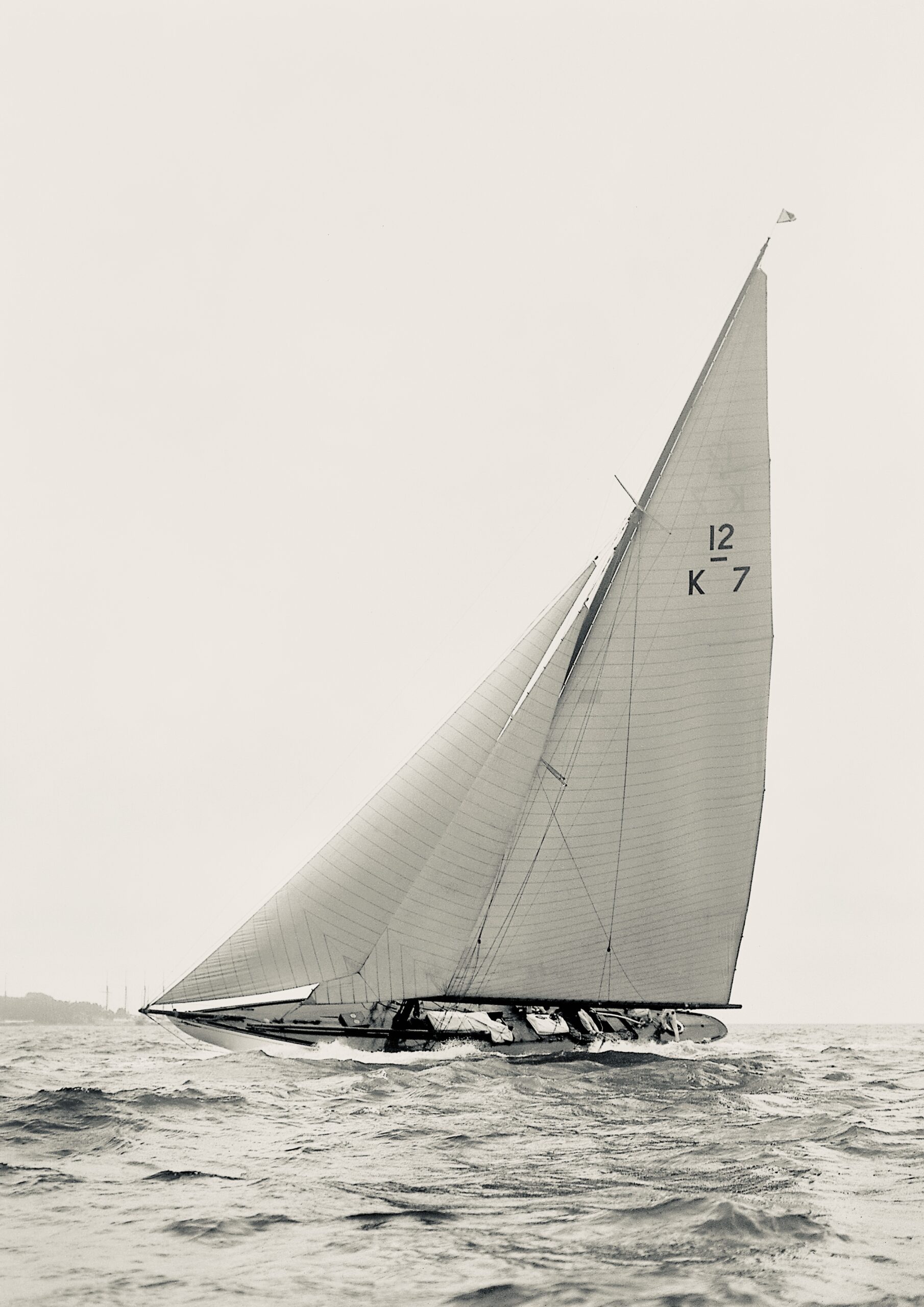
Year 1927 May
International Rule/Second RuleDesigner W. & R.B. Fife
Builder W. Fife & Son
Construction/Hull# 748
Length Overall 19.86 m
Waterline 12.95 m
Beam 3.76 m / Draft 2.60
Sail Area 190 sq.m. (1947)
Original Owner J. Lauriston Lewis, Original Name RHONA
1. Born in Fairlie – The Origins (1927)
In 1927, a masterpiece was launched on the shores of Fairlie, a small Scottish village by the Firth of Clyde: RHONA, designed by the legendary William Fife III and built at the world-renowned William Fife & Son yard.As a classic 12-Metre yacht of the 2nd International Rule, RHONA belonged to one of the most exclusive racing classes of her era. Measuring 20.50 meters overall, built of the finest mahogany, with her elegant lines and the iconic dragonhead carving at the bow, she symbolized the pinnacle of craftsmanship and timeless beauty. Soon, she was sailing under the burgee of Greenock and later Greenwich – a striking presence in the heart of the British yachting scene.
2. Many Names, Many Lives –
The Owners of RHONA
Since her launch in 1927, RHONA has sailed under different names and flags, shaped by the passions and visions of her successive owners. Each left a mark on her, and together they tell the story of a yacht that has lived many lives across nearly a century.
1927–1929 – J. Lauriston Lewis
(Greenock, Scotland)
RHONA’s first owner was a Scottish gentleman from Greenock, one of Britain’s great sailing hubs of the early 20th century. Under his ownership, RHONA carried her original name and was a symbol of elegance on the Clyde, part of the exclusive world of Fife-designed racing yachts.
home port: Greenock (Great Britain). Rig: Bermudan cutter Mr. Lauriston was the owner also of Lucilla. Rhona had good results in the 1929 Cowes Week with a third overall placement (first Mouette, second Moyana) and 1 first in one of the six races.
1927–1929 – J. Lauriston Lewis
1930–1932 – Algernon George de Vere Capell,
8th Earl of Essex (Greenwich, England)
In 1930, RHONA was purchased by Algernon George de Vere Capell (1884–1966), the 8th Earl of Essex. Educated at Eton, he served as a Lieutenant in the 7th Hussars, later in the Hertfordshire Yeomanry, and during WWI in the Remount Service. Beyond his aristocratic duties, he was an enthusiastic amateur actor, leading his own theatre productions for charity.
During his tenure, RHONA’s home port shifted to Greenwich, placing her in the refined world of British high society and yachting clubs.1933–1958 – Arnfinn Kolbjørn Heje (Oslo, Norway)
One of RHONA’s most distinguished owners was Arnfinn Heje (1877–1958), a Norwegian businessman and Olympic sailor. He was the director of the Agra Margarine Factory in Oslo, but also a celebrated yachtsman, having won the Gold Medal at the 1912 Stockholm Olympics in the 12-Metre class aboard Magda IX. Under his ownership, RHONA was renamed Hei II and remained based in Oslo. For a quarter of a century, she raced and cruised in Scandinavian waters, making this one of the most stable and prosperous chapters in her life.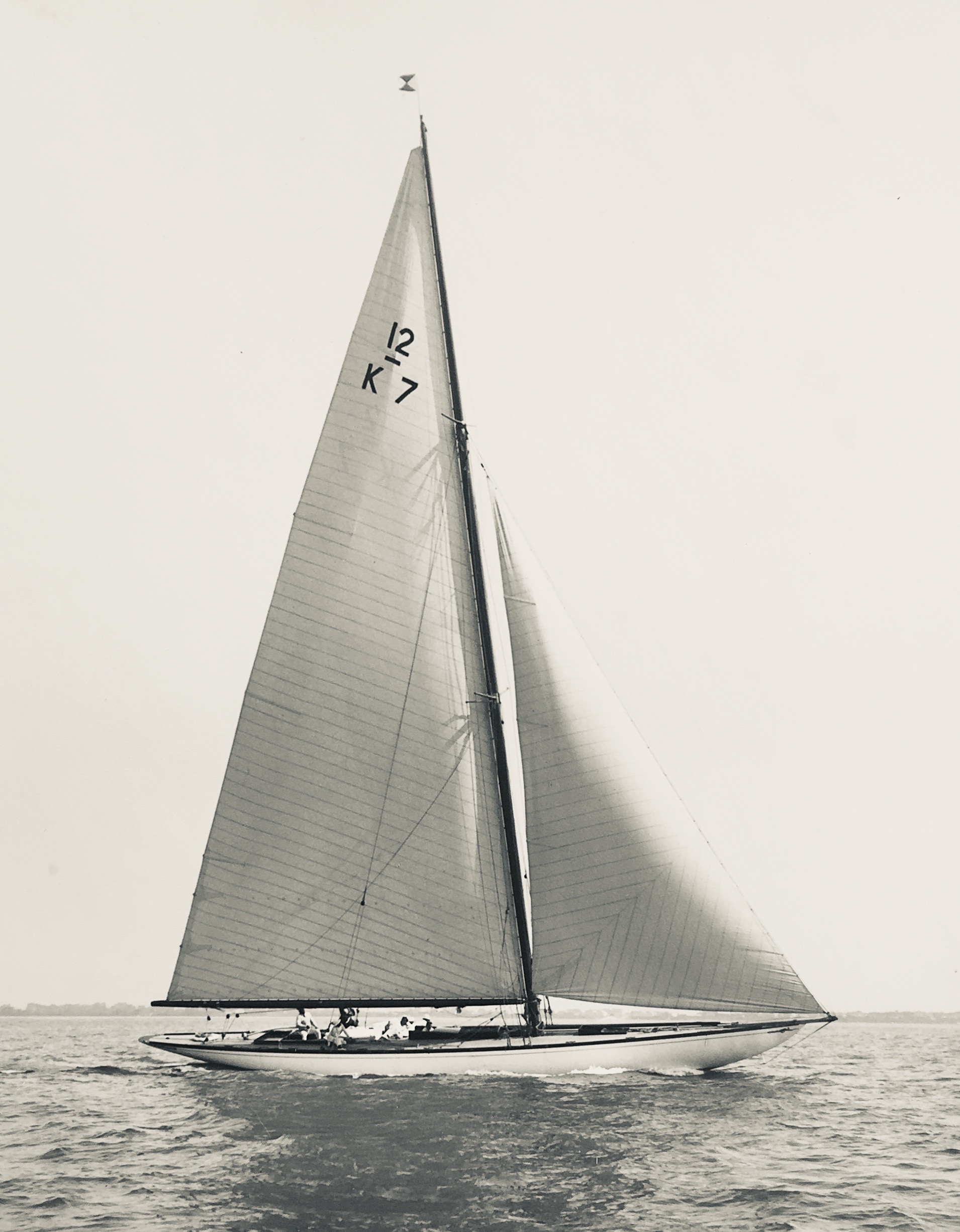
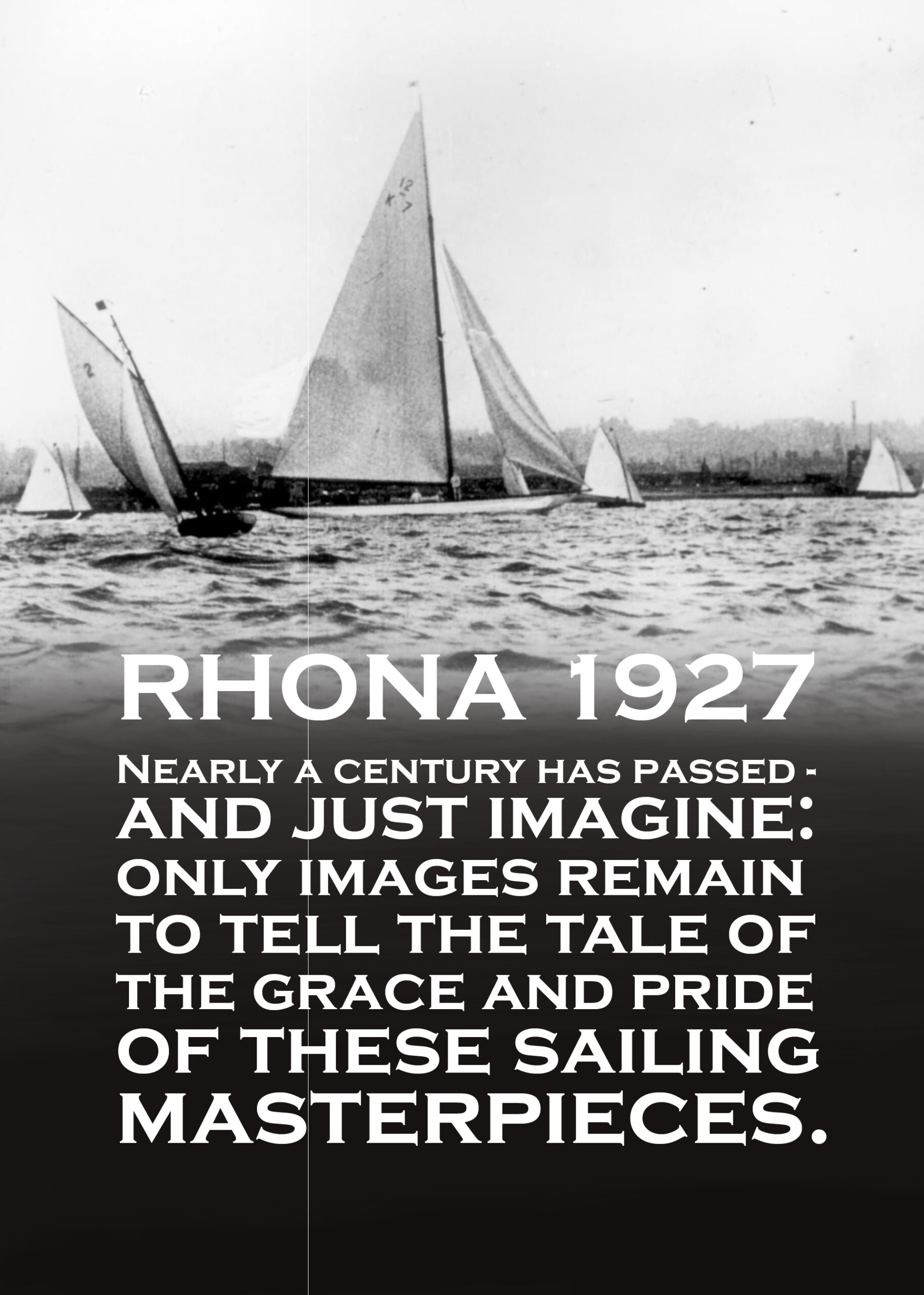
1961–1969 – Jan Arthur Iversen (Sarpsborg, Norway)
By the 1960s, RHONA underwent major changes under Jan Arthur Iversen. He converted her into an auxiliary cruising yawl, fitting a cabin superstructure, an engine, and even a mizzen mast. Renamed Frisco VI, she departed from her pure racing origins to serve as a long-distance family cruiser.1969–1970 – Urban Ström (Gothenburg, Sweden)
For a brief but unusual interlude, RHONA became a floating artist’s studio. Swedish painter Urban Ström acquired her in 1969, mooring her outside Gothenburg. Though not sailed much, she offered inspiration as a creative retreat, adding a bohemian twist to her history.1971–1974 – Stig Westberg & Friends (Sweden)
A group of enthusiastic Swedish sailors, led by Stig Westberg, restored RHONA to more active sailing condition. They returned her name to Hei II and carried out a substantial refit at the Broderna Jacobsson yard: new engine, reinforced mast step, and new sails. This period revived her as a capable sailing yacht once again.1974–1980 – Anders Hemberg, Curt & Lars Hässler (Stockholm, Sweden)
Three Swedish yachtsmen – among them Lars Hässler, later a well-known sailor and author – purchased RHONA and renamed her Golum. She underwent another overhaul at the prestigious Plym Yard and was operated as a charter yacht in Scandinavian waters. This was a lively chapter, as she once again took part in cruises and regattas.
1980s–2018 – Joaquim Trill Gil (Costa Brava, Spain)
Spanish real-estate broker Joaquim Trill Gil brought RHONA from Sweden down to the Costa Brava. During the delivery voyage she suffered damage and partially sank. Though salvaged, she was never fully restored.
For decades she lay in Puerto de L’Escala, decaying and offered for sale at unrealistic prices. By the 2010s, she had become a forgotten wreck, unwanted by the locals and nearly destined for the scrapyard.
1980s–2018 – Joaquim Trill Gil (Costa Brava, Spain)
Since 2018 – Dan Meury (Costa Brava, Spain)
In 2018, Swiss sailor, master craftsman, and designer Dan Meury took on what others had written off as a lost cause. Where most saw only decay, he recognized the unmistakable Fife lines beneath decades of neglect – and the rare opportunity to rescue a true maritime icon. Without the backing of a major shipyard, but armed with exceptional skill, relentless precision, and an unwavering commitment to authenticity, he began a full-scale restoration entirely by hand – exposed to wind, sun, and salt on the Costa Brava. Every original detail that could be preserved was carefully saved; every element beyond repair was rebuilt as it once was, using traditional methods and materials. After six years of meticulous work, RHONA has regained not only her original name, but her soul. Her relaunch in 2026 - the beginning of a new century of elegance under sail.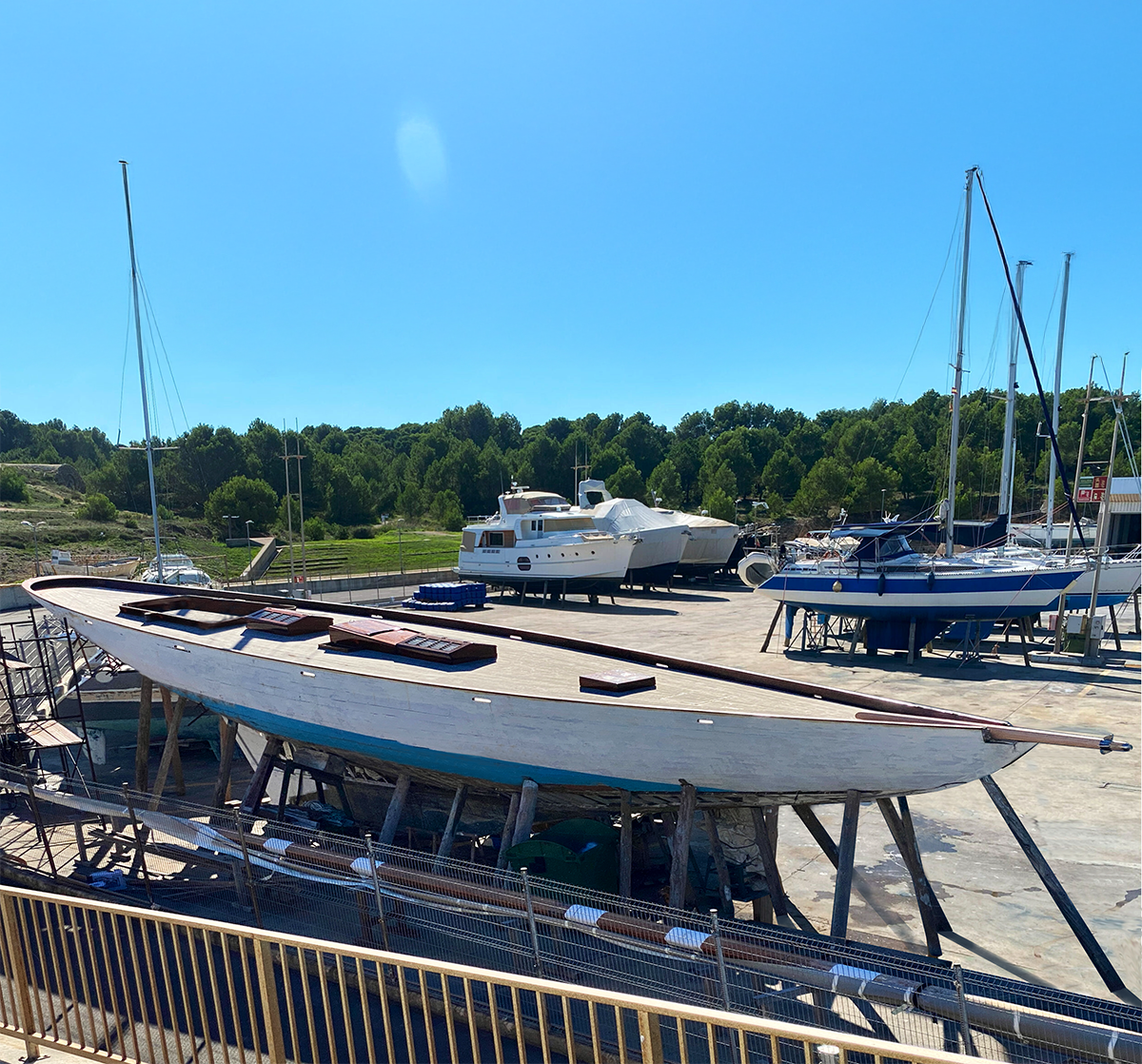
J. Lauriston Lewis
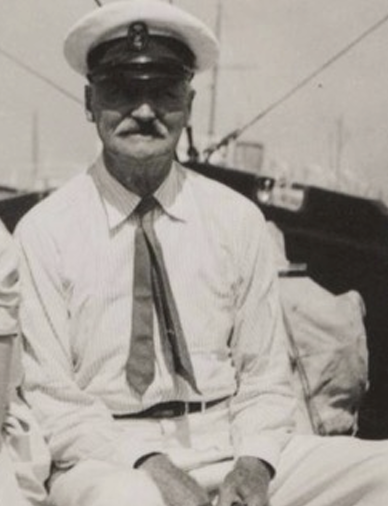
James Lauriston Lewis (1864–1947)
Earl of Essex
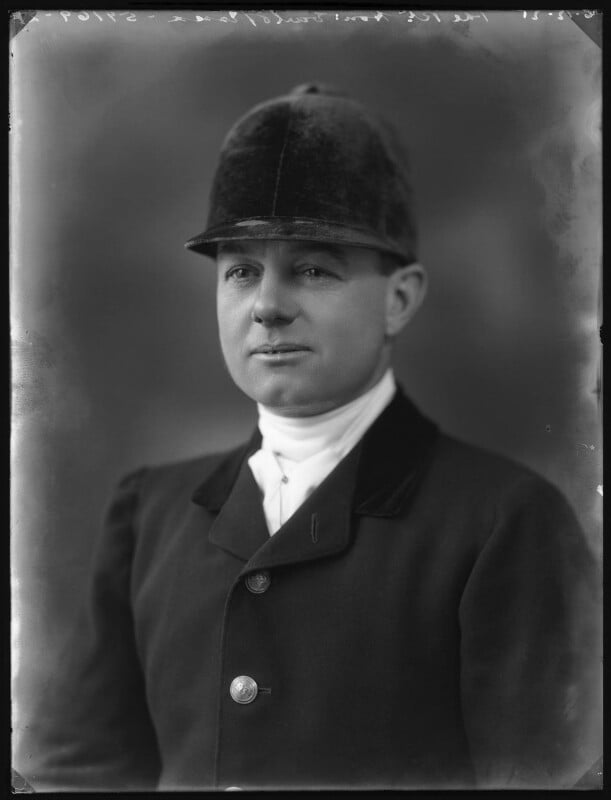
Algernon George de Vere Capell, 8th Earl of Essex (1884–1966)
Arnfinn Heje
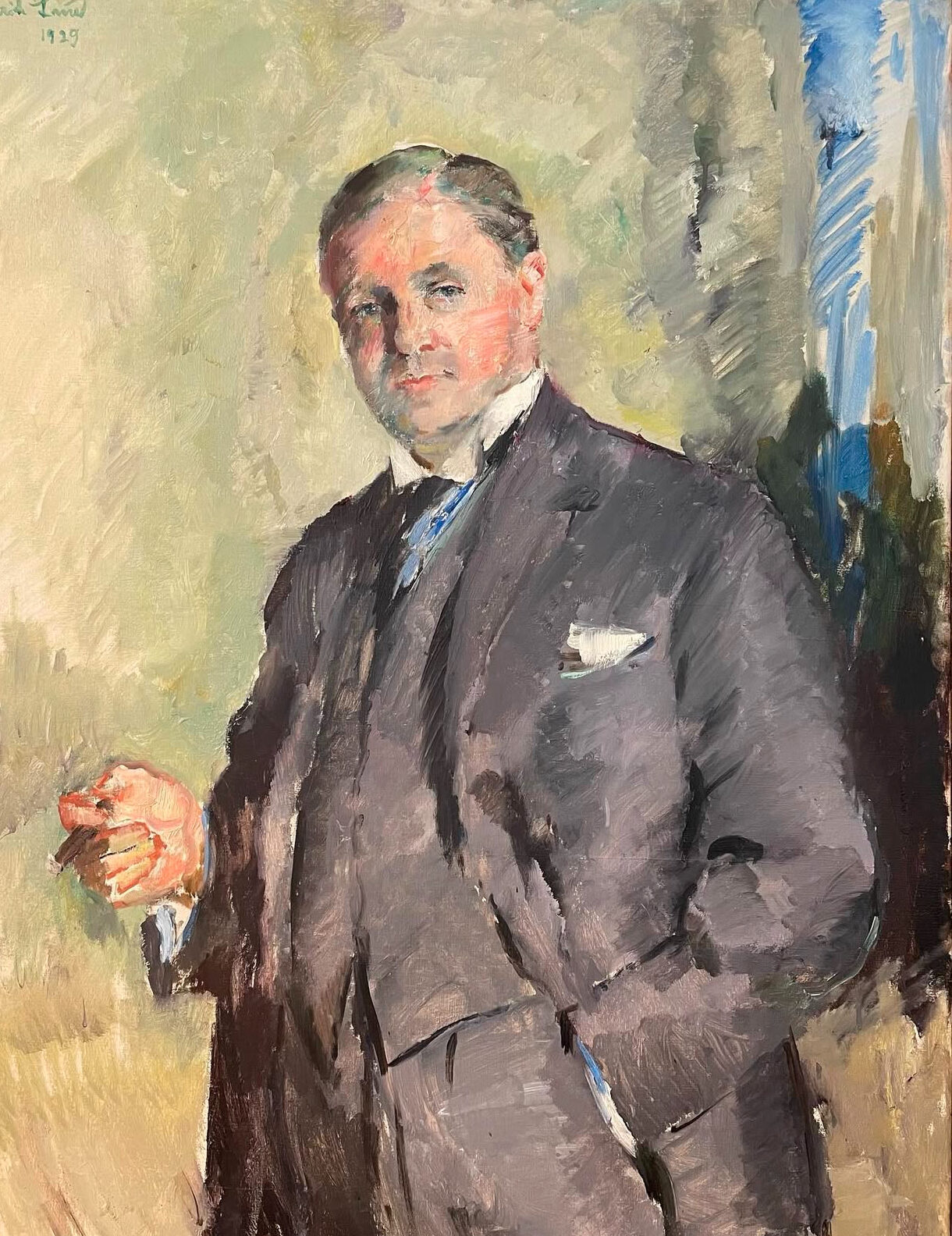
Arnfinn Kolbjørn Heje (Oslo, Norway) 1977-1958


